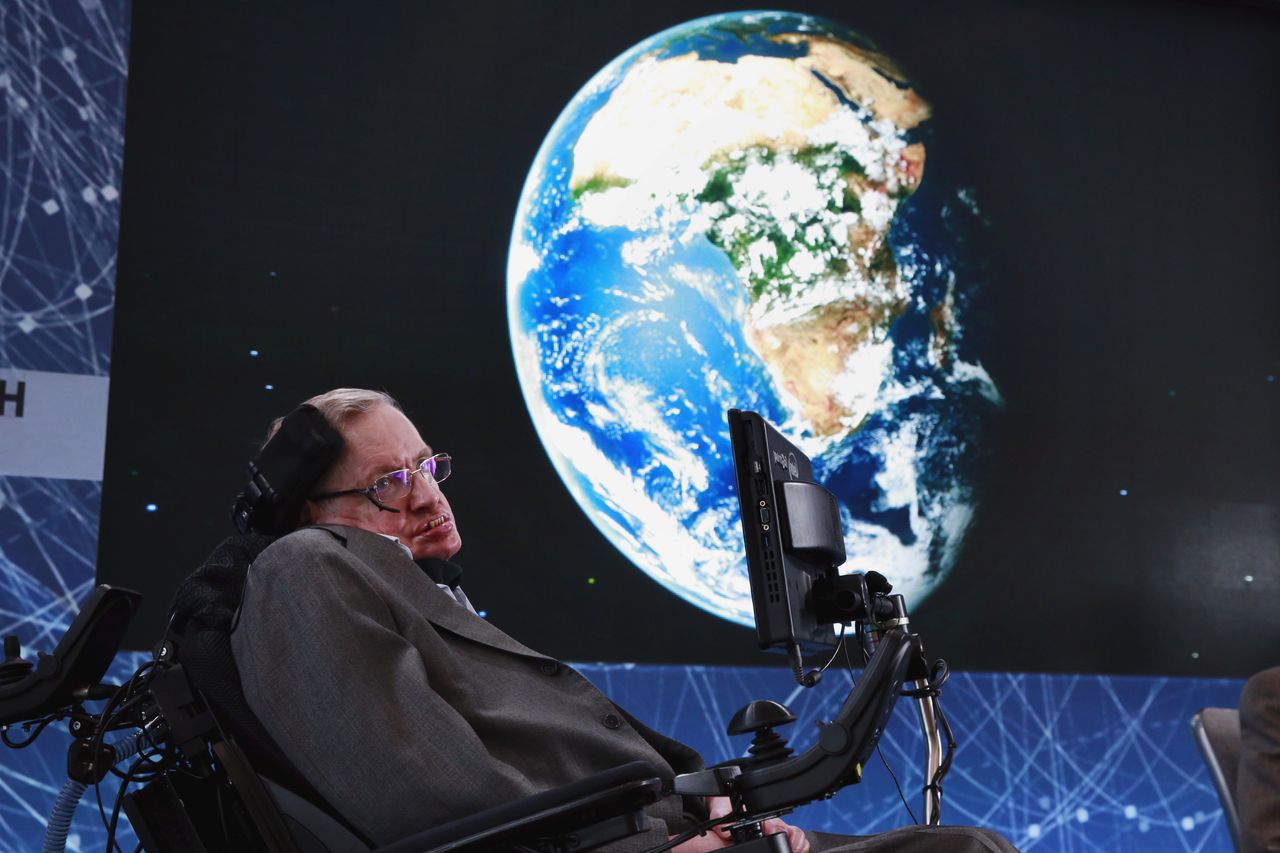Six weeks after his death at the age of 76, Stephen Hawking’s final paper has been published with the catchy title, A Smooth Exit from Eternal Inflation?
But what does it mean? Well despite it being co-written by the most famous name in physics, it’s more a nugget of understanding rather than a groundbreaking scientific discovery.
The paper, co-authored with Professor Thomas Hertog, deals with one of Hawking’s favourite topics – how the universe came into being.
Marika Taylor, Professor of Theoretical Physics at Southhampton University, explained: “This paper is about the long-standing question of how did inflation start – why did the universe suddenly decide to expand really rapidly?
“Why did it do that, instead of something else?”
Cosmologists, following the work of Hawking and many others, generally agree the universe expanded incredibly rapidly for a fraction of a second after the Big Bang. It’s a process they call inflation. Straight after, it calmed down into its present state – containing stars, galaxies and the building blocks that would eventually become human.
Some people took this idea further, and suggested inflation goes on forever creating a “multiverse” of many different universes, each with wildly different characteristics.
But this created a problem.
Carlo Contaldi, Professor of Theoretical Physics at Imperial College London, laid it out in simple terms for us. “They thought that the universe comes into existence and it would be in this sort of bubbly form where in different patches of the space time, the universe would look very, very different”.
“One of the big problems of this ‘eternal inflation’ is that any given time at any point in space-time, there are parts of the universe that keep inflating forever and the problem is it’s very difficult to reconcile this with the universe we live in.
“Our little patch is far more mundane and uniform and allows things like us to come into existence.”

This problem is one that rattled Hawking. If there are infinite types of universe, with infinite possible variations, then there is no way physics can predict what type would create the conditions that allowed us to come into being.
Drawing on string theory, Hawking and Hertog used more powerful, modern mathematical techniques than those available in 1979 when inflation was first proposed.
Contaldi says: “In this paper they apply some fairly recent developments and found that the universe that emerges isn’t as complicated as the eternal universe picture.
“It’s actually a universe where almost everywhere it looks very much like our part – it’s very much nearly flat so it’s all very liveable so we wouldn’t be in a highly exceptional patch.”
In essence, our universe is typical and other universes that could make up a multiverse are, in theory, similar to ours.
The paper tackles a troubling aspect of cosmology, but is just a small part of ongoing work on something even more mind-bending – that the three dimensional world around us is just an illusion.
“It’s a good paper, but it’s not revolutionary,” says Taylor. “This whole way of trying to understand the very early universe in terms of this theory without gravity – that really is revolutionary and is a real paradigm shift.”
Taylor said that at the very beginning of the universe “there weren’t really three spacial dimensions”, and explained the best description suggests there were two dimensions. “That’s pretty radical,” she said.
Hawking died in March aged 76. He suffered from a rare early onset form of motor neurone disease, that paralysed him over decades. He communicated through a speech device, triggered by movements in his cheek muscle.